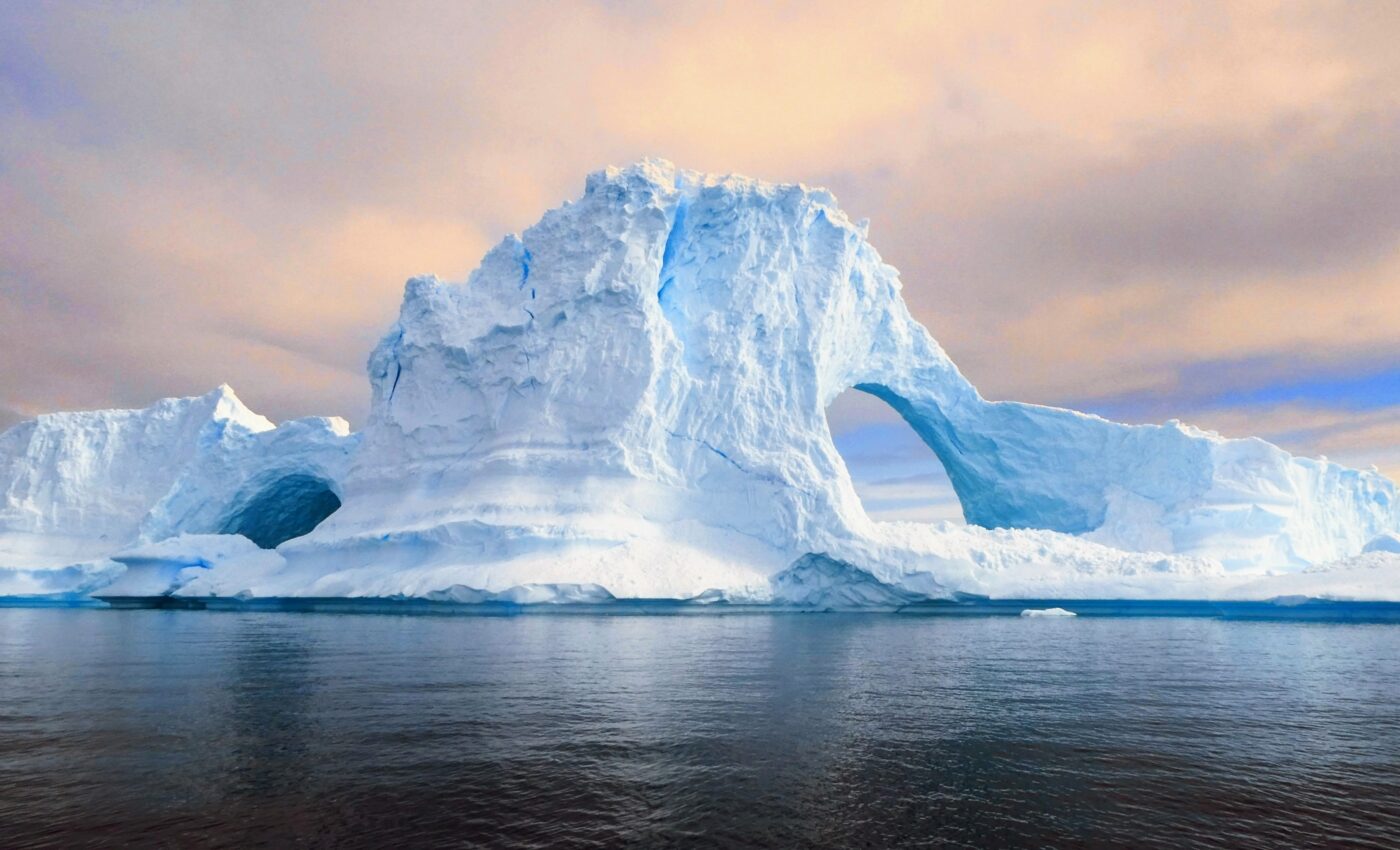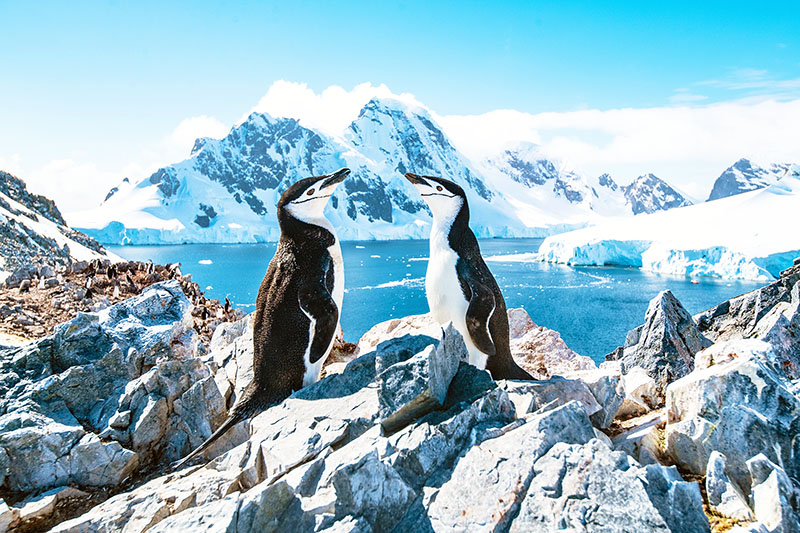
Antarctic icefish have developed alien-like superpowers to survive
In the remote, frigid world of Antarctica, a unique group of lifeforms persists in spite of the harsh conditions, with land temperatures averaging around -60°C and ocean temperatures near the freezing point of saltwater (-1.9°C).
One such example is the Antarctic icefishes (Cryonotothenioidea), which have evolved extraordinary adaptations to thrive in the icy waters surrounding the continent. Among these adaptations are special “antifreeze” glycoproteins, which prevent ice formation within their cells, the absence of hemoglobin in some species, and the loss of the inducible heat shock response, which is nearly universal in other organisms.
A recent study published in the journal Molecular Biology and Evolution has uncovered the genetic mechanisms responsible for the adaptation of Antarctic icefishes’ visual systems to both extreme cold and the unique lighting conditions found under Antarctic sea ice.
The study, led by Gianni Castiglione (now at Vanderbilt University) and Belinda Chang (University of Toronto), focused on the impact of sub-zero temperatures on the function and evolution of icefishes’ visual systems, particularly the temperature-sensitive protein rhodopsin, which plays a role in vision under dim-light conditions.
Castiglione and Chang’s previous research had already suggested a key role for rhodopsin in cold adaptation. “We had previously found cold adaptation in the rhodopsins of high-altitude catfishes from the Andes mountains, and this spurred us into investigating cold adaptation in rhodopsins from the Antarctic icefishes,” said Castiglione.
What the researchers found
In their study, the researchers found evidence of positive selection and accelerated rates of evolution in rhodopsins among Antarctic icefishes.
They also identified two amino acid variants, absent from other vertebrates, that appeared to have evolved during two key periods in icefish history: the development of antifreeze glycoproteins and the onset of freezing polar conditions.
This timing suggests a strong association between these variants and the adaptation and speciation of icefish in response to climatic events.
To verify the functional effects of these amino acid variants, the team performed in vitro assays, creating versions of rhodopsin containing each variant. Both amino acid changes impacted rhodopsin’s kinetic profile, lowering the activation energy needed for the protein to return to a “dark” conformation, and likely compensating for cold-induced decreases in rhodopsin’s kinetic rate.
Additionally, one amino acid change led to a shift in rhodopsin’s light absorbance toward longer wavelengths. This simultaneous alteration of both kinetics and absorbance was unexpected, according to Castiglione, who noted, “We predict that this allows the icefish to adapt their vision to red-shifted wavelengths under sea ice and to cold temperatures through very few mutations.”
Interestingly, the amino acid changes seen in Antarctic icefishes differed from those responsible for cold adaptation in high-altitude catfishes, suggesting multiple pathways for adaptation in rhodopsin. To further explore this line of inquiry, the researchers aim to study cold adaptation in rhodopsins of other cold-dwelling fish lineages, including Arctic fishes.
“Arctic fishes share many of the cold-adapted phenotypes found in the Antarctic icefishes, such as antifreeze proteins. However, this convergent evolution appears to have been accomplished through divergent molecular mechanisms. We suspect this may be the case in rhodopsin as well,” said Castiglione.
Unfortunately, acquiring the data needed may prove difficult. “A major obstacle to our research is the difficulty of collecting fishes from Antarctic and Arctic waters,” says Castiglione, “which limits us to publicly available datasets.”
This task may become even more challenging in the future as these cold-adapted fish are increasingly affected by warming global temperatures.
According to Castiglione, “Climate change may alter the adaptive landscape of icefishes in the very near future, as sea ice continues to melt, forcing the icefish to very likely find themselves at an evolutionary ‘mismatch’ between their environment and their genetics.”

Other lifeforms found in Antarctica
In addition to Antarctic icefishes, Antarctica hosts a variety of other unique creatures that have adapted to its extreme conditions. Some of these species include:
- Penguins: Several species of penguins, such as the Emperor, Adélie, Chinstrap, and Gentoo penguins, call Antarctica home. These flightless birds have adapted to the harsh climate and are excellent swimmers, feeding on krill, fish, and squid.
- Seals: Antarctica is home to a diverse array of seals, including Weddell seals, Leopard seals, Crabeater seals, Ross seals, and Southern elephant seals. These marine mammals are well-adapted to the cold and icy environment and primarily feed on fish, squid, and krill.
- Krill: Antarctic krill are small crustaceans that form a crucial part of the Antarctic food web. They serve as a primary food source for many marine animals, including whales, seals, and penguins.
- Whales: Several species of whales inhabit the waters around Antarctica, including the Blue whale, Humpback whale, Minke whale, and Southern right whale. These whales migrate to Antarctic waters during the summer months to feed on the abundant krill.
- Albatrosses: These large seabirds can be found in the Southern Ocean and around Antarctica. They have impressive wingspans, which allow them to glide for long distances without flapping their wings. They feed on fish, squid, and krill.
- Tardigrades: Also known as water bears, these microscopic invertebrates can withstand extreme conditions, including the freezing temperatures of Antarctica. They can be found in mosses and lichens that grow on rocks.
- Lichens and mosses: While plant life is scarce in Antarctica, some hardy species of lichens and mosses have adapted to the cold and dry conditions. They grow on rocks and are found mainly in the ice-free regions of the continent.
- Snow Petrels: These small, white seabirds are well-adapted to the cold Antarctic environment and can often be seen flying near icebergs and sea ice.
- Skuas: These predatory seabirds are native to Antarctica and feed on fish, penguin eggs, and chicks.
These are just a few examples of the diverse life found in Antarctica, where many species have evolved unique adaptations to survive the extreme conditions.

How climate change is impacting Antarctica
Climate change is having significant impacts on Antarctica and its surrounding ecosystems. Some of the most notable effects include:
- Rising temperatures: Antarctica has experienced a warming trend over the past few decades, with the Antarctic Peninsula being one of the fastest-warming regions on Earth. This increase in temperature can lead to the melting of ice sheets and glaciers, impacting both terrestrial and marine ecosystems.
- Melting ice sheets and glaciers: As temperatures rise, ice sheets and glaciers in Antarctica are melting at an accelerated rate. This contributes to rising sea levels globally and affects the stability of the Antarctic ice sheet. The loss of ice also reduces habitat for species like penguins and seals that rely on sea ice for breeding, resting, and hunting.
- Sea ice decline: Sea ice plays a critical role in Antarctic ecosystems by providing a habitat for various species and supporting the food web. Declining sea ice due to warming temperatures can disrupt the breeding and feeding habits of species such as penguins, seals, and krill.
- Ocean acidification: Increased levels of carbon dioxide in the atmosphere lead to higher concentrations of CO2 being absorbed by the ocean, resulting in ocean acidification. This process can negatively affect marine organisms, such as krill and shell-forming species, which are crucial to the Antarctic food web.
- Changes in food availability: Climate change can affect the abundance and distribution of key species like krill, which are vital to the Antarctic food web. Changes in food availability can have cascading effects on higher trophic levels, including penguins, seals, and whales.
- Changes in species distribution: As the Antarctic environment changes, some species may expand their range southward, while others may face a reduction in suitable habitat. This can lead to shifts in species distribution and potential competition between native and newly arriving species.
- Increased human activity: Climate change may make some parts of Antarctica more accessible, leading to increased human activities such as tourism, fishing, and research. These activities can put additional pressure on fragile Antarctic ecosystems and introduce invasive species.
- Impact on global sea level: The melting of Antarctic ice contributes significantly to global sea-level rise, which can have wide-ranging consequences for coastal communities and ecosystems worldwide.
Overall, climate change poses significant threats to Antarctica’s unique ecosystems and the species that call it home. The impacts of climate change on Antarctica can also have global consequences, such as contributing to sea-level rise and altering ocean circulation patterns.
—-
Check us out on EarthSnap, a free app brought to you by Eric Ralls and Earth.com.













